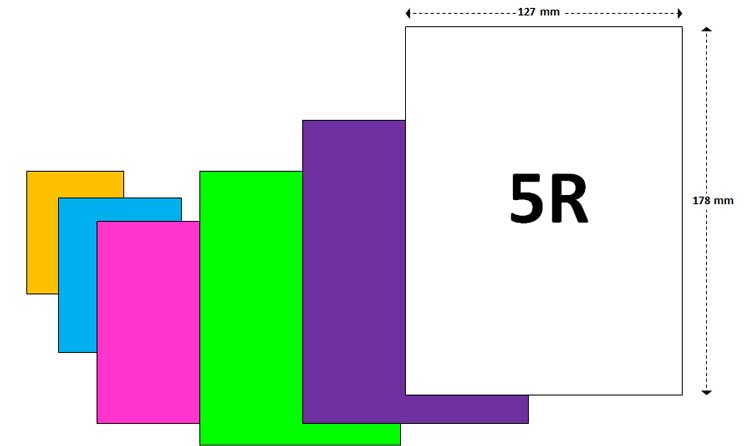

An image sized at 1024 x 768 pixels or 8 x 6 inches fits a typical 4:3 ratio.

For every 4 units of width, there are 3 units of height, creating a rectangular shape.
#COMMON PHOTO SIZES INCHES TV#
4:3 RatioĪ 4:3 ratio is typically used for TV displays, computer monitors, and digital cameras. Images framed at 1080 x 720 pixels or 6 x 4 inches are set within this aspect ratio. The 3:2 ratio has roots in 35 millimeter film and photography and is still widely used for print sizes. This aspect ratio is commonly used for print photographs, mobile screens, and social media platforms, but it’s not ideal for most TV or digital formats. Some common 1:1 ratios are an 8 x 8 inch photo, a 1080 x 1080 pixel image, or typically any profile picture template on social media sites (think Facebook). Common Aspect Ratios 1:1 RatioĪ 1:1 ratio means that an image’s width and height are equal, creating a square. Let’s go over some common aspect ratios that are typically used across different spaces.

When you use the right aspect ratios it ensures your images are displayed as intended without stretching or resolution loss. The aspect ratio of an image displayed on a computer will be different from the aspect ratio of that same image displayed on a phone.Īspect ratios are a critical part of web content because images need to be uploaded at different aspect ratios for different uses, like desktop vs. However, an image’s aspect ratio will change depending on the medium in which it is presented. The relationship between its width and height determines the ratio and shape, but not the image’s actual size. This means that an image measured in centimeters will have the same aspect ratio even if it was measured in inches. An aspect ratio does not have units attached – instead, it represents how large the width is in comparison to the height. For instance, a 6 x 4 inch image has an aspect ratio of 3:2. You will recognize it as two numbers separated by a colon in an x:y format. The aspect ratio of an image is the proportional relationship of the width to the height. Don’t know which size to use for your image or design? We have listed common aspect ratios, along with popular image and photo sizes to help you create your next project.


 0 kommentar(er)
0 kommentar(er)
